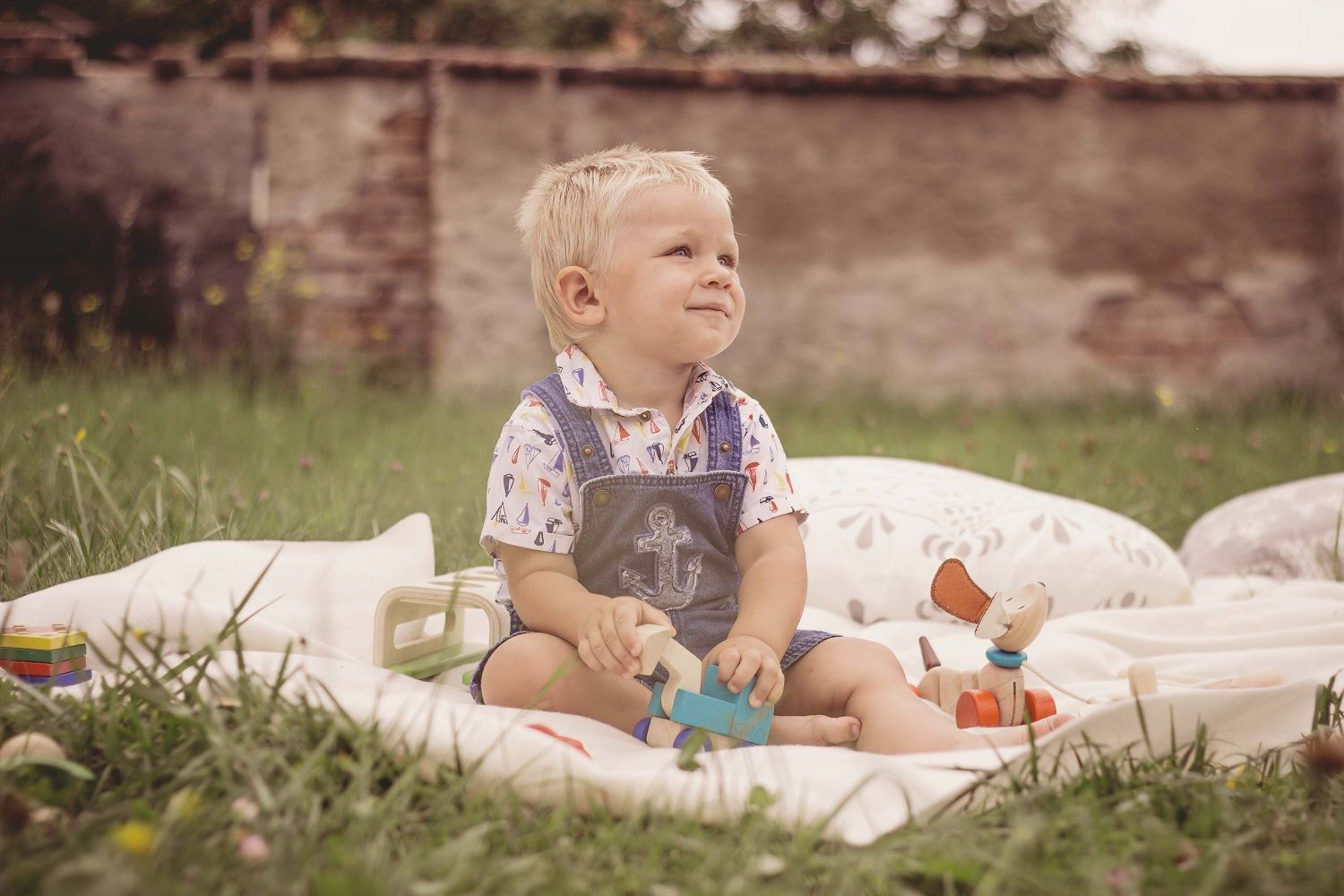Setting Up the Home Environment, Part II

We spoke about the Prepared Environment as a concept and last week, described the home environment for a newborn. Now it’s time to discuss the environment of a crawling baby and toddler.
About halfway into the first year of life, there come two major movement-related milestones: the child learns to move about, and later to sit unsupported. Suddenly the little stationary infant, who before had to rely on others to be moved, or to be brought toys, turns into a slithering, scooting, crawling whirlwind of curiosity and exploration.
Soon, once this newly mobile child finds something interesting, something they can really sink they teeth into (and yes, the teeth will be coming, too), they can sit, hold it and use their hands to explore. Before, they needed to hold themselves up (or hold the objects above themselves if lying supine); now all this capacity is free for the objects of interest itself.

Explore the fundamentals of Montessori parenting with this free video by Sylvia Arotin, offering insights and strategies to empower and educate your child.
This can be a bit of a scary time for parents: all kinds of common household equipment are suddenly a potential danger, from electrical sockets to the cat’s box. Needless to say the house should have been, and likely was, “babyproofed” – made safe for our fearless explorer, some time ago; still, it will likely need some more work. The same thing will happen all over again once they reach another milestone some months later, when they learn how to walk.
Sadly, what many parents do now in the name of safety is to restrict the child: in playpens, highchairs, and other contraptions that stop them from reaching out to their environment. Dr. Montessori, as well as Dr. Quattrocchi Montanaro (Montessori’s student and the Grande Dame of the Assistants to Infancy program), could not had been blunter about the effects of such actions: as they wrote, by doing so we are effectively trapping children at a lower stage of development. This is foolish and shortsighted. Instead of limiting the child’s environment, now it is time to extend it, to offer new opportunities that allow the child to use and refine their new gifts.
Adjusting the Home Environment
So what do we change? First of all, safety really must be considered: whilst we don’t want to coddle the child overly and wrap them in cotton wool, the mobile infant really can be a danger to themselves. The best way to start is to get down to the floor, right next to your baby, and observe what kind of trouble can you get into from their vantage point. And you might as well already consider what will happen when your baby starts to walk, because they will be pulling up to standing in no time at all.
This is a good time to temporarily remove decorations, tie up curtains and drapes, move away family heirlooms and art pieces. This explosion of movement and curiosity will not last forever, and neither will your child’s daredevil tendencies – once they become able to understand that certain things are out of bounds or dangerous, you will be able to return things to normal.
Indeed, it would be much easier to just wait out this time with your child in a playpen. But consider: these are some of the most developmentally important months of your child’s life, when they are building the foundations of their future personality and forming their character. Surely you want them to learn, to act on these immense motivations; and surely you want them to know that they are welcome and valued in your family’s home, that the world is open to them and full of wonders. The more they practice control and understanding of their environment, the sooner they will possess it, and become respectful and trustworthy with it as a result.
What to Bring In?
There are subtle but important changes to the child’s own space. First, the movement area will need more “sophisticated” aids to movement – small “obstacles” to crawl over and climb (think of something like a firm booster cushion) and items to pull up on (a miniature barre right in front of the mirror is ideal, but a small seat, ottoman or a low padded shelf will do just as well). The mobiles, which stimulated the lying child’s kicking and reaching are no longer necessary, although they still make for beautiful decorations. Instead, balls to chase are a lot of fun!
In the physical care area, it’s time to increasingly involve the child in changing and washing. As they become able to sit, they should get a little chair or pillow to sit on when dressing, and ideally a mirror next to it as well; with the adult sitting down next to them, they can start assisting and then gradually take over pulling on socks, pants, shoes and shirts. A toddler should have a little wardrobe of their own, with a few (appropriate, seasonal!) choices to pick from, so that they can decide “by themselves” what to wear – the blue shirt or the green one? Toileting, of course, becomes a whole separate topic we have addressed already.
As the child starts taking solids, they should get the appropriate setting for it: what in Montessori we call a weaning table. Luckily, small chairs and tables are now widely available. We do discourage highchairs, or at least their constant use (they can serve during family meals, allowing everyone to sit together), because they require someone to strap the child in and then take them out again. A convertible chair can be a good alternative.
From Nursery to a Child’s Room
In toddlerhood, the “baby gear” is gradually lost as nursery is converted into a “big child’s room”. They will need a workspace, bookshelf, cupboards, wardrobe; they will no longer need a changing table or a baby bath. Little changes in the sleeping area as the child already had their own bed, but it can be now lifted and put onto a child-sized bed frame, and accompanied by a nightstand and light.
The important work of this period is, in fact, integrating the areas of the previous special baby environment into the family’s home. As such, toileting and hygiene should take place in the bathroom; instead of a special place to eat, the child should share meals in the kitchen or dining room. It is crucially important that all of the parts of the home that belong to the family include the child as well: for example, you can put a small chair into the living room, an accessible drawer with small dishes and utensils in the kitchen, clear a shelf in the bathroom cabinet for the toddler’s toothbrush and soap so that they can get it themselves, and so on. Likewise, the child should also have duties and responsibilities in the home, set up so that they can fulfill them themselves; you can read more about this in an earlier article.
Next, we will look at the Primary and Elementary aged child and their needs.
Some more safety tips can be found in this article.
Montessori Beginnings
YOUR ULTIMATE
MONTESSORI PARENTING COURSE
FOR ZERO TO THREE
Gain clarity and confidence in your parenting to raise a resilient, independent and joyful child.


